
I first heard of Detlef Mertins in the mid-1990s, when I came across a copy of The Presence of Mies in my college art library. When I hear the name Mies van der Rohe , however, I normally respond with something like open disinterest - yet that's exactly why I was so impressed with Mertins's book. In it, Mies is transformatively - even excitingly - discussed in terms of "event-spaces" and militarized timescapes, "/Clouds/" and liquid crystals; and anyone who could put together a book like that, I thought, was someone whose career deserved to be followed.
More than a decade later, then, I found myself living in the same city as Mertins, who had become Chair of the Architecture Department at the University of Pennsylvania. I decided to get in touch with him, and to ask about the changing nature of architectural education - its historical allegiances and routes of future promise. From new software packages to 3D printing and desktop robotics - by way of algorithmic design, De Stijl ornamentation, the Dymaxion House, and tomorrow's suburbs - Detlef and I embarked upon a wide-ranging conversation about the tactics of architectural education in this time of rapidly shifting technology.
After all, how is anyone now meant to teach architectural design? Where does ecology fit in, for instance - and does it entail its own aesthetic expectations? What about the role of corporate clients, speculative work, or community housing? And what other forms of graphic representation - whether it's the use of spreadsheets and comic books, MMPORGs or YouTube - can be incorporated into worthwhile coursework?
Most simply: how do you keep your students interested?
Ӣ Ӣ Ӣ
Detlef Mertins holds a B.Arch from the University of Toronto (1980), and a PhD from Princeton University (1996). After teaching at the University of Toronto from 1991 to 2002, he moved to Philadelphia to join the University of Pennsylvania. Mertins has been a visiting professor at Columbia, Harvard, Princeton and Rice universities; and he is well-known for his revisionist essays on the history of modernism, featured in Mies in Berlin , Mies in America , NOX: Machining Architecture , and Phylogenesis: FOA's Ark - not to mention The Presence of Mies and the English edition of Walter C. Behrendt's The Victory of the New Building Style . Elsewhere, he has published on Zaha Hadid, Natalie de Blois, Walter Benjamin, optical instrumentation, and the spatiality of modern events.
He and I spoke via telephone.
Should the primary focus of today's architectural education be on the built environment as it is actually experienced - in other words, Wal-Mart, sprawl, gated communities, refugee camps, exurban office blocks, etc.? Or should students focus on the built environment as it could be: projective utopias of an architecture yet to come? Or, finally, should students study architecture as if it's a self-contained discipline, like a mathematical proof or a symphony, with solutions that may never be built and conclusions that seem incomprehensible to anyone outside the field?
Detlef Mertins : It's both an interesting and almost inevitable division that you've created here - but it's a false one, I think. Architecture is practiced in the world - and so is poetry, right: it's practiced in the world . The question becomes one of relationship . Our students, and students in most schools, are indeed looking at the world that's out there - but rather than perpetuating that world in its own terms, as it currently is, architects are prone to thinking about alternatives: about how the world could be or should be. There's an ethical dimension to the practice, of course, but there's an imaginative one, as well. There's a desire to think about alternatives - which is, in fact, the most realistic thing you can do.
What role should an architecture school play in cultivating these alternatives, and preparing students to think them through?
Mertins: I see schools as an infrastructure that enables both faculty and students to pursue their own agendas - where students can, in fact, develop their own agendas and establish a relationship or orientation to the world of architecture. There are all kinds of political issues out there that resist singular and final solution - but individuals can and should take their own positions. For example, should our graduates work for corporate interests - or for community, environmental, and artistic interests? Are these necessarily at odds? Those are choices that people will have to make on their own.
All along, of course, we're building skills. We have a very short period of time in which to develop aptitudes on a thousand fronts, spanning the technical and professional to the social and formal. I think our mission is to graduate students who have a rich bundle of abilities, with a critical insight and orientation toward the world, along with a desire to engage that world in a creative practice. What the specifics of that creative practice are, we leave up to the students.
Our faculty presents a pretty broad range of alternatives of their own - but, then, I hope that students will even be critical of those and find their own paths. One of the great virtues of architecture as an activity is that it tends to be situation-specific. Each site, client, program, and audience is different, and so architects need to develop dexterity, adaptability and resourcefulness to treat each assignment as a unique event.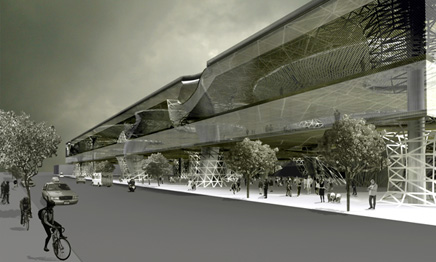
Image: Adrienne Yancone, 2nd Year. Instructor: David Ruy
How important is business savvy in the education of today's young architects? Do you think helping students navigate the needs of future clients, for example, or even the complexities of zoning law and liability regulation, is just as important as developing their spatio-technical skills?
Mertins: It varies. I can't say that, as a faculty, we have a single pedagogical focus on business - except in our professional practice courses. There, for instance, students are all required to develop a business plan for an architectural practice of their own. They have to think about who their clients are going to be - who they want as clients - and they have to develop a model of an enterprise that will meet their personal objectives and be economically viable. I personally like the idea that some of our students could develop new markets for the kind of contribution they want to make.
Of course, we introduce students to the regulatory framework for building buildings, and some studios deliberately set those as a challenge to be confronted creatively. I'd say that quite a lot of the studios, and different courses, expose students to the world of clients. Even in our first-year studios, we have assigned projects where students meet clients and members of the community - whether that's a school board, an airline company, an arts organization or local community organizations. We've had a course on architecture and branding. We've also had studios that addressed the introduction of casinos into Philadelphia. One of those studios took an entirely different approach from how the city was thinking about it and said: if the entire purpose of bringing casinos into Philadelphia is to generate revenue for the public sector - for public schools, for instance, then why not pursue that as the goal directly and ignore the casino, go into the communities, and discover ways in which architecture can assist in developing local economies? That, again, is a different orientation - not necessarily with a specific client group - but it is using architecture to engage the political economy of a particular neighborhood in productive, catalytic, and creative ways.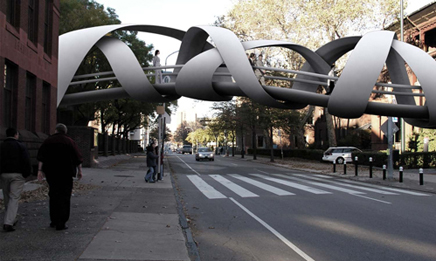
Image: Matthew Krissel, 3rd Year. Instructor: Peter McCleary
Do you run up against any intellectual conflicts when you move back and forth between these practical, community-based studios and other studios focused more on architecturally introverted, formal experimentation?
Mertins: We will do quite rarefied experiments - in technology, or with generative models, etc. - but the ambition is always to bring them into the world in a way that will be useful and of cultural value . Over the past several years, for instance, we've had the benefit of Cecil Balmond teaching with us. He's not only an amazing structural engineer, he's also an innovator in design method - using geometric and algorithmic models from the sciences as tools for generating patterns, organizations, forms and spaces. Quite abstract, you know - very abstract, in the first instance. He teaches both an elective workshop in which initial tools and skills are developed, and then a research studio in which those skills are applied to real world problems. One year the students addressed the problem of healthcare and hospital design, testing the potential of algorithms for organizing programs and activities; another year it was the University of Pennsylvania's potential expansion toward the Schuylkill River.
That isn't exactly business , of course - but it is teaching students how to use architecture to forge a particular relationship to the world. At the same time, we offer a certificate in real estate development, which has become quite popular, and, last year, we launched an option for M.Arch students to do an MBA in parallel at the Wharton School . We are also developing a program in product design in collaboration with our Engineering School and Wharton, in which students will learn how to bring new products into the market, among other things.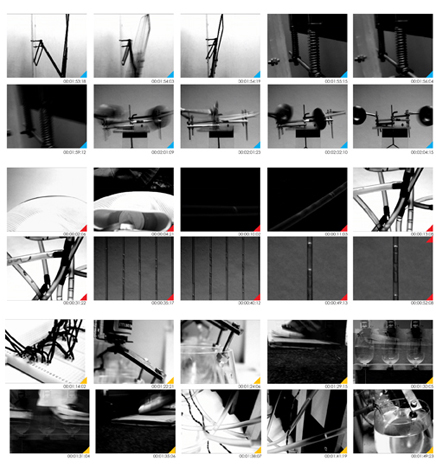
Image: Lang Cheng, Do Hoon Kim, Myunghoon Kim, 3rd Year. Instructor: Homa Farjadi
While we're on the topic of business savvy, it's often struck me that if Mies van der Rohe had become a large-scale suburban developer, then the global suburbs - and architecture in general - would now presumably look quite different. This raises the question of who has been more influential in the shaping of 21st century architecture: would you say, in other words, that Toll Brothers or Mies van der Rohe is a more important point of reference for today's student architects?
Mertins: In effect, your characterization isn't adequate to Mies. Take, for example, the Seagram Building. What is the Seagram Building but a corporate skyscraper in New York? One among many - but it entirely changed the nature of skyscraper design. It created the plaza as a new form of public space, leading to changes in the zoning by-law. It also created a new model for lobbies, making them bigger, more spacious and open to the street - public in orientation- but it did all this in the service of a commercial corporate client.
Mies was a realist of sorts - a critical realist He developed his way of working in Berlin in the 1920s when constructivists were mining the potential of new media, new technologies and new types for producing a new reality. They understood that the givens of the historical period were simply that - they were givens. They were not things that you could choose or negotiate, but things that you had to work within - but you worked within those critically . You worked within those transformatively. You worked within those to find new potentials - and, in some cases, to foreground the problematics that the original situation entailed, to make those problematics more visible. Mies sought to develop a new vernacular for modern society out of the structures already brought forward by commerce and engineering. He sought to ennoble the generic and thereby enrich everyday life, providing an expanded horizon of experience and awareness.
In fact, Mies wanted to have a much bigger impact than he ended up having, although his impact in the 1950s and 60s was pretty big. The housing project that he did for Lafayette Park in Detroit could have been an exemplar of housing - and, in fact, it's a really congenial, livable place today, much admired and valued by its occupants. It was even built as a public/private partnership - which is amazing in itself. This was in the early 1950s. He was working with a developer who was a philosopher by training! [laughs ] Herbert Greenwald. And the urban planning of the project was done by Ludwig Hilbersheimer who was an unrepentant communist for the whole of his life [laughter ] - so that was a more complicated mixture than your question allows.
The issue of working critically within development formats was more a part of architectural culture some years ago than it is currently. It's still there - for instance, in the work of Rem Koolhass, Diller & Scofidio, Lewis Tsurmaki Lewis, Sharples Holden Pasquarelli, or Atopia. Keller Easterling has argued that architects can learn from the spatial products of global capitalism - more specifically, from the sneaky ways in which businesses work to produce enclave formations for agriculture, shipping, recreation and entertainment. To be effective in the larger world of spatial production, architects today need new tools and techniques. But they also need to continue to mobilize our traditional tools and techniques - you mentioned spatio-technical skills a moment ago - which remain a fundamental resource for any engaged, strategic practice.
Do you think that this retreat from development is actually to blame, in many ways, for what we now see as the American vernacular landscape - vinyl siding, McMansions, and so on?
Mertins: That's a huge issue. I don't think architecture has ever made an inroad into suburban housing. It did into public housing, and it does a little bit today in the realm of condominium design. It's something that preoccupied people at mid-century, like Buckminster Fuller . Fuller invented the Dymaxion House hoping that it could be generalized and mass-produced, like Ford automobiles. It never happened. Why?
I think the issue, in some ways, is endemic to the development industry. By and large, developers don't hire architects who would be innovative; they rely on established markets that they continue to perpetuate, rather than looking for real innovation. Relative to other sectors of the economy, housing is a fragmented industry still, perhaps less able to produce large-scale change. Then again, America's car industry has fallen behind its international competitors, too - so perhaps there's an issue of complacency there. But innovation in housing is back on the agenda, I think. There's a resurgence of interest among architects in manufactured housing, and there are advances in mass customization and integrated manufacturing - so there may be a way in which architects are, today, becoming more engaged with this question than they have been for some time - and they're doing so, once again, at a moment of broad technological change.
Let's hope developers and the financial industry will be more responsive this time! That was one of the problems for Buckminster Fuller: he didn't attract a lot of capital. I guess this takes us back to your question about business savvy...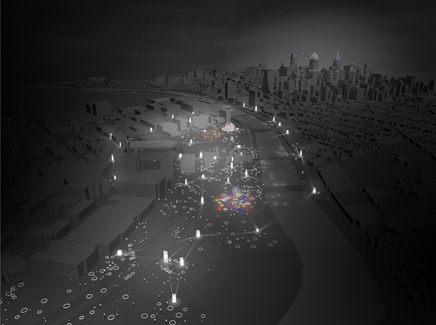
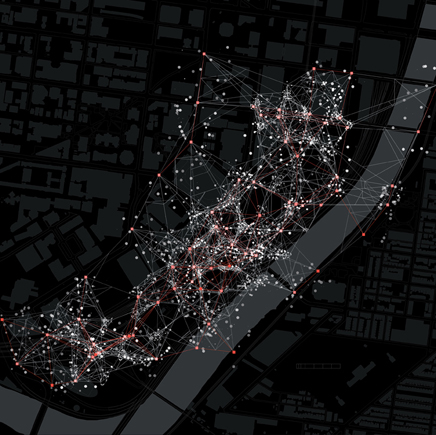
Images: Justin Coleman, Amy Johnson, Jaime Lee, Herman Mao, 3rd Year. Instructor: Cecil Balmond
Specific software packages seem to have a disproportionate influence on the design process. Because of its ability to affect student work, how should new software be introduced into the curriculum? Further, do you see a kind of aesthetic or structural homogeneity emerging, in which the signature of certain widely-used pieces of software can be seen - or does that give too much agency to the software? Finally, how can this digital influence be educationally or pedagogically shaped by architectural educators?
Mertins: When digital design first hit architecture schools in the mid-90s, there was a tendency to use what some people have called Hollywood software , like MAYA , for its formal capabilities. That was criticized precisely for your concern, because it was shaping buildings to look like dinosaurs - because the software was originally designed to create dinosaurs for Hollywood. [laughter ] It also wasn't easy to make the bridge from those designs into construction.
But several things have changed since then. On the one hand, there's been a proliferation of software: designers now have more tools to choose from, and they can choose the ones that fit their interests and needs. On the other hand, we're now beginning to use software that can be customized - to develop our own software, working with software developers. We've been doing that at Penn with Bentley Systems , for instance, testing the capabilities of their new software, Generative Components . Ferda Kolatan , David Ruy and Jenny Sabin have been instrumental in this for us; and Cecil Balmond's Non-Linear Systems Organization will be hosting a joint conference/workshop with Bentley this fall. Our approach is not so much driven by software but by a desire to develop new design methods and new design tools - we're even beginning to teach students scripting. Partly, that's driven by new, algorithmic approaches - but it's also just something that's now feasible, given computer technology that didn't exist before.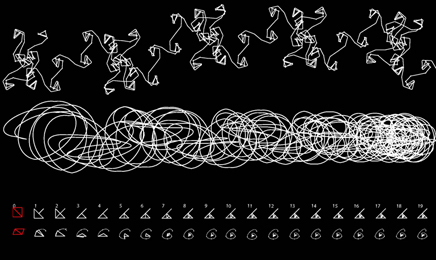
Image: Steve Pitman, 3rd Year, Form and Algorithm. Instructors: Cecil Balmond and Daniel Bosia
Cecil Balmond's work seems particularly exciting in that regard. Could you describe his working methods a bit?
Mertins: : Balmond's Advanced Geometry Unit at ARUP in London is a multi-disciplinary team of mathematicians, computer scientists, physicists, engineers, architects etc.; and so, depending on what their needs are, they collaborate and design the tools that will let them do what they want to do. I think that's going to be the future - or, let's say, it will be a part of the future. There are going to be architects who don't want to do that, of course, who don't have the interest or the mathematical inclination - and so they will be the users of tools that are already available. But then there will be architects who are computationally savvy enough to be able to script their own programs. I saw this first with Bernard Cache who is not only an architect and a theorist, but a mathematician and computer programmer - really a remarkable talent! He was the first person I knew who didn't design by drawing but by writing code , using numerical and algorithmic instructions to generate surfaces and forms. Potentially, this process avoids the messiness of translating from one medium or form of software to another. It offers a seamless transition from design to production, given the increasing penetration of digital fabrication tools into the building industry.
I'm not a mathematician or a programmer, so I can't speak to the specifics or how-to of algorithmic design, but I am impressed by the extraordinary range and scope of what can be produced this way, drawing by rule-based instructions. It seems extraordinary to me how good designers can manipulate their models, add more parameters and incorporate all the things that need to be addressed in making architecture. Algorithmic design makes the computer into a truly robust tool. Something I've learned from Balmond and David Ruy is that there is no discontinuity between geometry and matter. Geometric organization is immanent to matter and vice versa. But it's not a linear relationship, so there's room for a designer to make choices, to adapt and transform a geometric model, as he or she works from abstract organizations towards buildable and inhabitable structures. Cecil negotiates that process like a magician.
Another thing I've learned from him is that there are antecedents for this method in the history of mathematics and physics - in non-western mathematical puzzles, as much as in quantum physics or string theory. It's interesting to think that in classical architecture, instructions for designing the orders were handed down by theorists in treatises, through rules expressed in language, but also through techniques learned via apprenticeship. Designing an Ionic or Corinthian capital was a sequential, rule-based process of geometric construction using compasses and rulers, figures and proportions. Designers had considerable latitude to customize or individualize their work within this system, even if invention only gradually came to the fore as the ethos of construction replaced the ethos of mimesis .
In any event, it's not an accident that today's algorithmic designers are keenly interested in the history of ornament. Personally, I'm fascinated by the parallels between today's algorithmic designs and the development of De Stijl architecture. What began as pure abstraction, in the counter-reliefs of Theo van Doesburg , became a robust model of design - perhaps the most paradigmatic model of modernism - that, already with Mies's Barcelona Pavilion, had incorporated materials and construction technologies, as well as strategies for organizing programs, uses, movement in and through buildings, views, and experiences. People who dismiss algorithmic design - and, of course, it has its critics both inside and outside of school, but criticism and debate in the academy are essential! - those who see it as too abstract, or unbuildable, or unlivable, should recognize that they are repeating criticisms that were leveled at modern architecture. They also ignore what I see as the much longer, and more fascinating, history of exchanges between architecture and the sciences: the tradition of architects seeking to learn from nature's capacity to produce forms, patterns and structures of extraordinary beauty and functional prowess. Algorithmic design taps into a giant reservoir of mathematical models already at work in the processes that constitute the universe. In that respect, it's still a form of mimesis .
Over the past several years, this approach has grown as a stream within our curriculum, although it is by no means the only stream. It's now taught in at least one of the design studios at every level, in some of our history and theory courses, and in some of the advanced electives that focus on design methods. I think there's a great potential for it to merge with our teaching of new technologies in structural and environmental engineering, with the development of new materials and methods of fabrication, and with ecological approaches to design. I'm hoping that we can develop this convergence over the next few years.
Let me just add a brief footnote to the software question in general. Architecture has always been mediated by modes of representation - so, in some ways, we could have asked the same question in an era in which perspective was the dominant mode of representation, or plans and sections were the dominant mode of representation. Plan and section are highly biased tools; they lead you to think about buildings in certain ways and not in others. I remember, some years ago, hearing Thom Mayne give a lecture; Thom, of course, had been renowned as a young man for his draftsmanship - for his extraordinarily beautiful drawings. He was always layering plans on top of plans, sections and elevations on top of one another - in other words, using the conventions of architectural representation to make these really rich drawings. But he said that he had given all that up because he was now interested in making three-dimensional forms that could only be modeled in a computer. So, for him, the computer was a very positive tool - not a constraining one. Its technical biases coincided with a shift in his own aesthetic biases.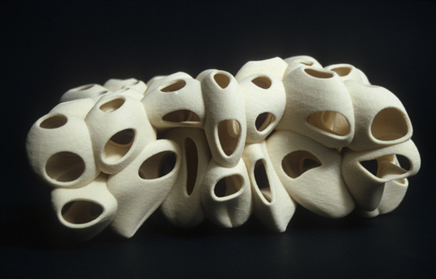
Image: Wendy Lam, 3rd Year. Instructor: Ali Rahim. Model fabrication made possible by a grant from Z Corporation.
How has this necessitated new forms of analog modeling - moving from X-Acto blades and glue, say, to 3D printers?
Mertins: At Penn, we've become very heavily invested in digital fabrication over the last six or seven years. That opens up a whole other way of thinking about the digital: making things at-scale, as well as making models and maquettes. These new designs would be inconceivable as artifacts produced by any other means - they're so complex that the hand would be very hard-pressed to produce them.
The same thing is happening with respect to things like building components. If you think of some of the more complex curtain walls or roof systems that have been designed these days - where every one of the joints of the system needs to be tailor-made or customized - that would have been impossible before digital fabrication and rapid prototyping. Now we're on the threshold of having machines that are basically printers : they make up components one at a time, to custom specifications, and at a very affordable price.
However, another component of the digital revolution that I would want to foreground briefly is something that I don't think we've worked through clearly enough in architecture - and that's the issue of network logistics . How is the development of communication infrastructure - globally, especially, but also nationally and even locally - changing the way in which components of buildings can be produced and brought together? Building materials and parts can be FedEx'd worldwide - or made right at your desk. We have to start thinking about that more.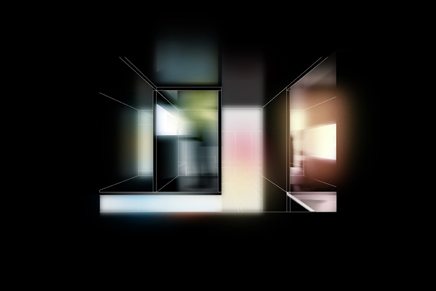
Image: Sungho Hong, 3rd Year. Instructor: David Adjaye
For precisely those reasons, it seems that the production of architectural space is increasingly woven into other manufacturing processes. In other words, someone working at Hyundai or Ford could simply enlarge a new design for a mini-van - eliminate the wheels, or cut out the engine - and, soon enough, you've got an addition to your house. You see things like this happening, for instance, with Toyota's jump into the prefab housing market, or with Greg Lynn's use of automobile assembly as a model for architectural construction. How do you prepare students for this kind of future, in which architecture may no longer be a unique and coherent industry?
Mertins: We do a little bit of this in our core curriculum - in construction courses - where there are plant visits and visits to building sites; but most of what we've been doing is at the advanced level. Stephen Kieran and James Timberlake have, more than anybody else in our school, really taken up this challenge, thinking about how architecture can mobilize the capacities of contemporary manufacturing more effectively.
In their research studio, and in their practice, they've been trying out new materials and new methods of fabrication in very inventive ways - usually in collaboration with industry. For instance, they're in the process of developing a product that would create a new kind of envelope system, called SmartWrapâ„¢ . That's something that grew out of a studio and has been developed in collaboration with engineers at DuPont.
What does it do?
Mertins: : SmartWrapâ„¢ takes the separate functions of a conventional wall and combines them into a thin, transparent sheet material. Put two together, with a big airspace in between, and you get an amazingly lightweight and high-performance skin.
In the last couple of years, Kieran/Timberlake have begun focusing on manufactured housing, and on factory assemblies: how to take advantage of factory conditions to produce larger-scale building modules. This year, we're developing an integrative building studio at the intermediate level where I hope we can incorporate more of this manufacturing intelligence within the core.
The other initiative we've taken is to inflect our digital fabrication courses toward parametric design, using Generative Components . Think again of the complex curtain walls and roof systems that I mentioned earlier - Generative Components is really geared toward facilitating that kind of design, where there are many components, but each component has its own size and even changes in shape. Ferda Kolatan has been exploring the potential of this for building structures as well as skins.
Image: Jessica Hogue, 2nd Year. Instructor: Ferda Kolatan
As far as these overlaps between architecture and other disciplines go, I'm also interested in inter-departmental collaboration - whether that's architecture students working with creative writing students, or with candidates in film studies, to design, write, and present joint projects - or working with students at the Wharton School of Business to seek venture capital. How have you fostered such inter-departmental actions at Penn?
Mertins: Well, we don't have a connection to creative writing - though it would be interesting to do that, and I think among some of our students there are such connections. But we have quite a lot of collaboration with Landscape Architecture, Planning, Historic Preservation and the Wharton School - including dual degree options with all of them, as well as cross-listed courses and joint studios. At the doctoral level we also collaborate with Art History; our students and theirs organized a terrific conference on art and architecture in the post-War period two years ago. We're also very lucky to have great programming in the visual arts at the ICA . A few years ago, we jointly sponsored a conference on "intricacy," which coincided with an exhibition of that name curated by Greg Lynn. This fall, they're having a show of collaborative work by Peter Eisenman and Laurie Olin (who is on our faculty in Landscape), and we'll hold an evening event with the two of them.
I mentioned before the new program in product design that we're developing with both the Engineering School and the Wharton School. That builds on a strong technology base that goes back to the days of Louis Kahn and Robert Le Ricolais , the structural engineer. We are also developing collaborations with the sciences. This last year, for instance, we started a research unit with Cecil Balmond called the Non-Linear Systems Organization , and it's specifically geared toward drawing on mathematics and the sciences. They organized a tremendous conference last fall, titled Workshops in Irreducible Complexity , that brought young designers from across the country together with some leading figures in theoretical physics, mathematics, and robotics - and that spawned some new collaborations among the participants.
This year, some of our faculty and students are collaborating on a series of lectures and research projects with Peter Jones of Penn's Institute for Medicine and Engineering , which is a direct out-growth of the NSO event last year. We, again, in the technology area, launched a research center this year with Tsingua University in Beijing; that's the T. C. Chan Center for Building Simulation and Energy Studies , and it's run by Ali Malkawi . Ali is an expert in using building simulation - even virtual reality - as a tool for sustainable design. That's something that involves engineering, computation and artificial intelligence - and we think it may play a strong role in developing the sustainability agenda in China.
What about genre? If you look at Archigram, for instance, or even Wes Jones, both of them are famous for using comic book-style drawings as a route toward architectural presentation - yet few architecture schools today seem to be teaching comic book art as a legitimate form of student design. How are things like comic books, cinema, digital animation, even painting (Zaha Hadid, of course, is a painter) - or, for that matter, narrative fiction - being taught to architecture students at Penn? Do these other genres have real pedagogical value?
Mertins: Sure - they would have great value. But these things are all, in the end, dependent on people who can actually do that - who can actually draw a comic book. I know I can't! [laughter ] We do other things, more related to graphic design and the visualization of information, so they are not quite as pop-cultural as your examples. Over the past fifteen years, architecture culture has become increasingly oriented toward research , and so the question of how to present that research - how to present information visually, graphically - has become a major topic in our field. Students turn to resources in graphic design, statistics, mapping and other fields, and it has sometimes led them to present projects in a way that is markedly different from conventional methods of architectural presentation. Similarly, at times when we are working with, let's say, business models or product design models, then some of the projects have used flow charts and diagrams of various kinds. Instead of using comic book or story board formats, we've developed diagrammatic ways of conceiving and presenting their work.
That doesn't deal with popular culture as you're alluding to here - which I think would be a great thing to do. So I will take all your ideas and see if I can get a faculty member to do them! [laughter ]
Students also learn to use video in some of our studios, not so much as a way to present their work but as a medium that captures qualities and temporalities that are more elusive for architecture. Students can also learn many lessons from the architecture of a video - though, here, the work probably has greater affinities with art videos than with commercial videos. In many ways, we're involved in a shift toward understanding architecture as a dynamic practice with a broad array of effects. Rather than focusing on form as an a priori , we are interested in form as a result of processes, techniques, methods, etc., and as generative - or catalytic - of effects that could be economic and political as much as aesthetic and expressive.
Those all require other forms of representation.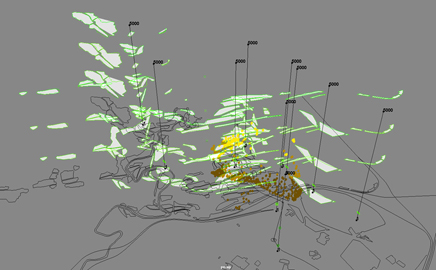
Image: Brian Holland, Post-Professional Studio. Instructor: Winka Dubbeldam
You've mentioned the issue of sustainability. Could you talk a bit more about how LEED certification, green urbanism, energy-use modeling, and so on, is being taught at Penn? More conceptually, how do ecological concerns within architecture spill outward into questions of urban design, site orientation, public transport, etc. - and how are these incorporated into the architectural curriculum?
Mertins: Environmental issues are everywhere in our program - as they are everywhere in our lives. We also just created a certificate in Ecological Design, with clear, focused courses, taught by our faculty most intensively involved in those issues, in research as well as in practice. Bill Braham , Ali Malkawi and Muscoe Martin take the lead in this. Muscoe's course on sustainability provide an introduction to LEED; Bill focuses on the relationship of energy and form; Ali develops cool tools for gauging the energy impacts of design decisions. His Building Simulation Group , which includes PhD students, is a locus of technical research, and it broadcasts news in the field through an electronic newsletter. Ali's creation of the Chan Center in collaboration with Tsingua University recognizes that China has been behind in sustainability, but it will race ahead as the country embraces the issue, much faster than we have in the U.S. - and may even influence developments here as a result.
We've also just refocused some of our lecture and seminar courses on urbanism, seeing as much potential for architectural expression and invention in ecology as in traditional tectonics. That's in both the history and theory sequence and in electives. David Leatherbarrow teaches a core course on architecture and urbanism that has a big environmental and ethical dimension. Helene Furján teaches how architecture has been informed by theories of ecology, systems, networks and emergence - and Rhett Russo is doing a course on biomimetics. This year, we have electives on informal cities across the world - on the lessons offered by historical, indigenous and non-western cities, and the phenomenon of balkanization and its social and political implications. Marion Weiss teaches urban studios that focus on the integration of architecture, landscape and systems of urban infrastructure, including landscape as natural infrastructure . While we teach urbanism and urban studios, we also look to our sister departments in Landscape Architecture and City Planning for some of what you're asking about. Of course, our students are also encouraged to do dual degrees and to take electives in other departments.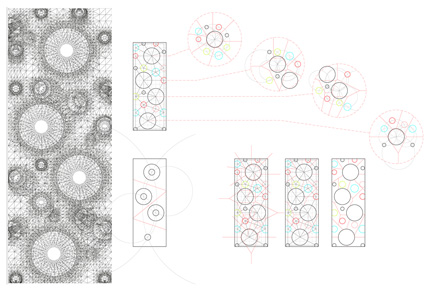
Image: Adrienne Yancone, 2nd Year. Instructor: David Ruy
Finally, do you see a role for architecture students in the local community? How can the Penn student body serve as a resource for the city of Philadelphia - designing housing projects, recuperating urban voids, designing riverfront paths, and so on? Conversely, how can the city of Philadelphia become more of a resource for students at Penn?
Mertins: Well, we hold a lot of our studios in Philadelphia. A few years ago, during the last election, our First Year studio took the topic of political spectacle . The students were asked to map a ten-minute event at either the Republican or Democratic conventions, and then to re-design voting booths and voting stations across the city.
We've had students working on hybrid programs - for instance, a school/market/community facility - in west Philadelphia, where they met with people from the school and the community and tried to address their needs. We've done the casino studio that I mentioned earlier. We have, in our undergraduate program, a project underway right now that is a federally funded prototype of a house in west Philadelphia. So we do have, I think, quite a lot of community engagement.
We also have a unit of the school called Penn Praxis , which is set-up, in part, to allow faculty to do real world projects with students - but also to stage workshops and events of a public nature. The casinos were one of those. A few years ago Penn Praxis organized a public design charette for Penn's Landing. Very often these projects have more of an urban orientation and are done in collaboration with our Planning department. Every year we hold an inter-departmental charette on a subject in Philadelphia, which students work on in multi-disciplinary teams. Experts in the field and community leaders help set the terms, give lectures and then participate in the jury. So it varies. We've had outreach into community organizations, outreach to the schools - we've often had schools as design topics, and now there is, of course, this big initiative for schools in the city.
Penn, as a whole, has a strong ethos with respect to social engagement and engagement with world problems. There's a great desire, across the university, to bring theory and practice together. It's an old legacy of Benjamin Franklin - but I think it's a very real one and a good one. Sometimes we pursue quite rarefied things. In the academy at large, in the sciences, in the humanities, there is speculative work that doesn't have any immediate application - we do that in architecture, we do that in landscape architecture - but, at the same time, there is an understanding that our speculations aim at things that are ultimately going to be effective in the world .
Ӣ Ӣ Ӣ
With thanks to Kristine Allouchery for her assistance with images; and to Detlef Mertins for his good humor, patience, and interest.
5 Comments
direct questioning with infomercially smart wrapped answers. nice.
i wonder if i can travel with Keller Easterling someday?
great, as long as you can keep the students focused after the graduation. it wasn't only the lack of business savviness of fuller but also the discontinuation of the supply lines (students). a lot of graduates get eaten by toll bros or similar. they should be also advised to go into the field and fight the war and stop using the backdoor to school, making the academy a shelter from the front lines (i understand the academy's personnel needs also, but).
i wish i was a student in these times. interview makes it exciting.
geoff, you're alright.
wow, awesome interview. I was just beginning to think that Penn didn't have anything that I wanted in a grad school, but this gives great perspective on the school. Thank you.
Any chance on getting Yung Ho Chang or Stan Allen to do a similar interview?
Hey - Thanks, Orhan. As per your suggestions, a wandering phalanx of counter-suburban student designers could hit the road and fight at the architectural frontlines. You could guide them. Design in the world, indeed.
Or perhaps Penn could launch a model suburb somewhere... (Detlef, heads up!)
And, kasa, either or both people are definitely in the cards. Whether they know it or not... A whole list is developing here, in fact. Expect this series - of interviews with educators/deans/chairs/etc. - to continue.
excellent indeed. for someone in my position (researching graduate school options) a series of such interviews would be great to look at alongside the forum's numerous grad school threads.
Such a series is indeed being planned. Given time.
So stay tuned!
Block this user
Are you sure you want to block this user and hide all related comments throughout the site?
Archinect
This is your first comment on Archinect. Your comment will be visible once approved.